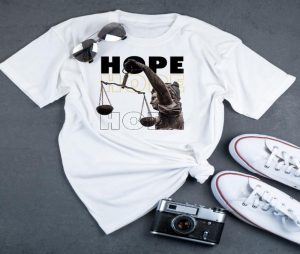Packaging has turned its way to meet the requirements of the market. The packaging industry is providing materials for packages that are flexible in use, durable, and cost-effective boxes.
The most important part of any product is its packaging because it protects the items inside from harm, loss, or damage. There are several sensitive products that needs special treatment for packaging. Pre-rolls are one them. These pre-rolls are pack in robust pre rolls packaging. Therefore, it is essential to choose materials that do not endanger the safety of products inside them. In addition, one should look for perfect packaging material that is free from contamination. After all, it carries valuable goods for money.
To pack, use paper or another type of packing material called corrugated fiberboard boxes. These are made up of three layers- two outer layers are liners made up of regular paper. While the other is a middle-flute layer made up of recycle paper. These types of boxes are cheap, strong, and recyclable. Let’s find the best materials to make retail boxes.
1) Cardboard:
Cardboard is a recycled product, and hence it is a green material. This makes it an ideal choice for environment-conscious customers. In addition, it can be easily mold to make boxes of any size or shape. This is good because it protects the package from being damage.
These boxes are good for protecting things from breaking. But they are bad when they get wet. They weigh more than other materials. Which means more fuel is used when you transport them. But these boxes cost less than other perfect materials and can be use for a long time.
2) Corrugated Fiberboard:
Corrugated fiberboard comes in three layers- two outer liners made up of regular paper and a middle layer made up of recycled paper. It protects very well against water and moisture due to its coating of wax or plastic film. It also offers superior support to keep the product intact during shipment.
Having a good resistance level against tearing, this material won’t allow your items to break easily. However, I will not recommend it for heavy-duty use as it will damage easily if you repeatedly use them in carrying heavy products. Also, this perfect retail box material tends to absorb moisture so much that it may cause mildew or rusting when there’s excessive humidity involved in the shipping process. So, store them in dry areas before packing any items properly into these boxes.
3) Corrugated Kraft Paper:
This is simply made up of two layers- outer made primarily from recycle paper and an innermost liner of brown Kraft paper. The inner liner is responsible for the sturdiness and resiliency of these retail boxes, while the outermost layer provides good resistance against tearing and ripping. However, this perfect packaging material is not suitable for carrying heavy items as it will easily rip apart.
Also, make sure to use only the best-corrugated Kraft paper with at least 200 pounds test weight or higher when making your own custom flat-packed shipping boxes to make them more durable. A lower test weight number means less strength which can compromise product safety during shipment.
4) Kraft Paper:
It’s one of the oldest materials use to make sturdy boxes that are mostly use to pack heavy items. Kraft paper is made of recycle wood pulp and can be easily found in light brown tan, or natural Kraft color.
Kraft paper boxes are recyclable, reusable, and 100% biodegradable, which makes them the perfect choice when you need to use eco-friendly materials for your packaging requirements on a budget. In addition, this material is so sturdy that it will rip apart even if one carries very heavy products inside.
5) Recycled Paper:
These boxes are make from recycle materials that have been use by someone before. This means that there is less of a chance for your product to be damage because the box has already been use. Moreover, these boxes are lighter and simpler to store than other material types because they take up less space for storage or transportation.
These kinds of packaging materials can be customize into different shapes and sizes. You don’t have to use a certain shape or size for all packages, as long as it appeals to you more. Furthermore, this material comes in many colors. You can choose a color that matches your company’s logo.
The disadvantages of recycled paper are that it is heavy and you need to pack it carefully. But if you do, the paper would be durable. Creasing, cutting, and tearing are other problems with these boxes. The material can also depend on how thick it is.
Another type of paper-based packaging is Kraft paper and custom kraft packaging is very trendy these days. This type of paper can be use for all kinds of packaging since it is thin, lightweight, and economical. You can laminate it or print on it or just leave it plain depending on what you want to do with the packaging to suit your product’s branding strategy.
6) Metal:
Among various types of materials used for packaging, metal is one of the most durable and strong ones. You can reuse this material indefinitely, which makes it cost-effective when you compare them to other products. With a shiny appearance, metal boxes look modern and attractive in stores.
The box can be stiff. But it is important to protect your product from scratches or damage during transportation. There are many different kinds of metal, but you need to choose carefully because they each have their own pros and cons. So, choose the metal and thickness wisely.
Conclusion
There are several materials that will find in the markets. You must select among them that provide complete satisfaction to the end-users. It is said that all metals possess a unique quality of reflecting light. But it’s also important to look at the weight of the material and its thickness since this will determine how durable your product packaging can be. Plus, some materials are sharp and might pose a risk to the products inside if not used carefully.





More Stories
Jessica Stein: Review A Financial Visionary and Top Broker at Maplewells.ca
Decoding the Impact of AI on Digital Marketing: A Look at WordPress Multisite
Evading SEO Pitfalls: Amplifying your Business through an Experienced SEO Agency